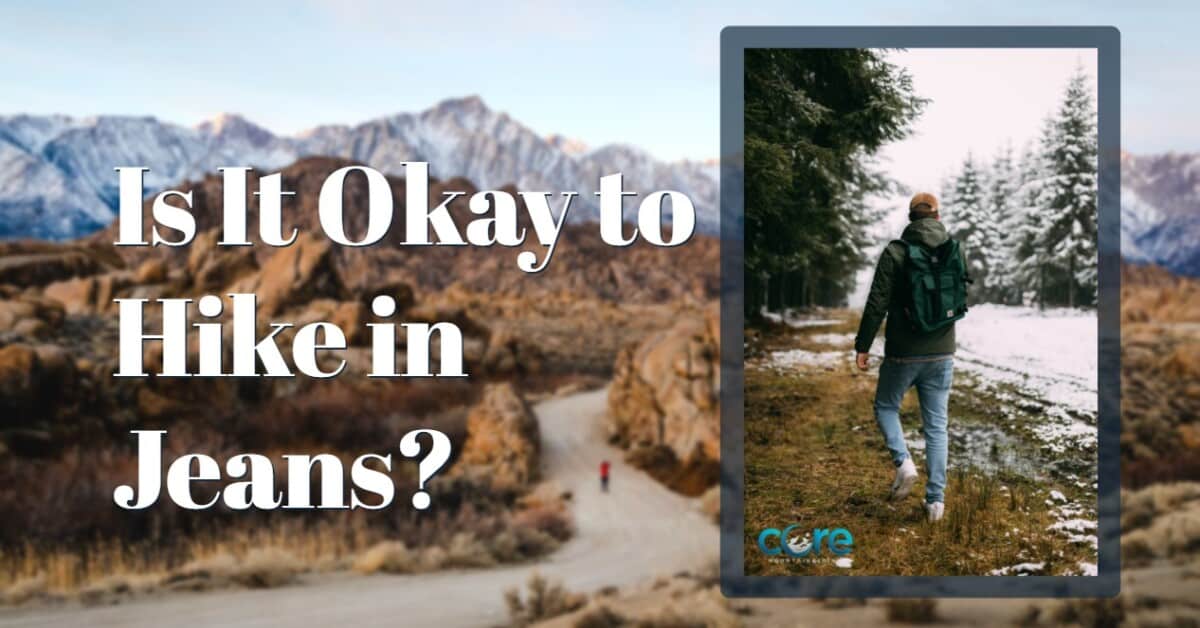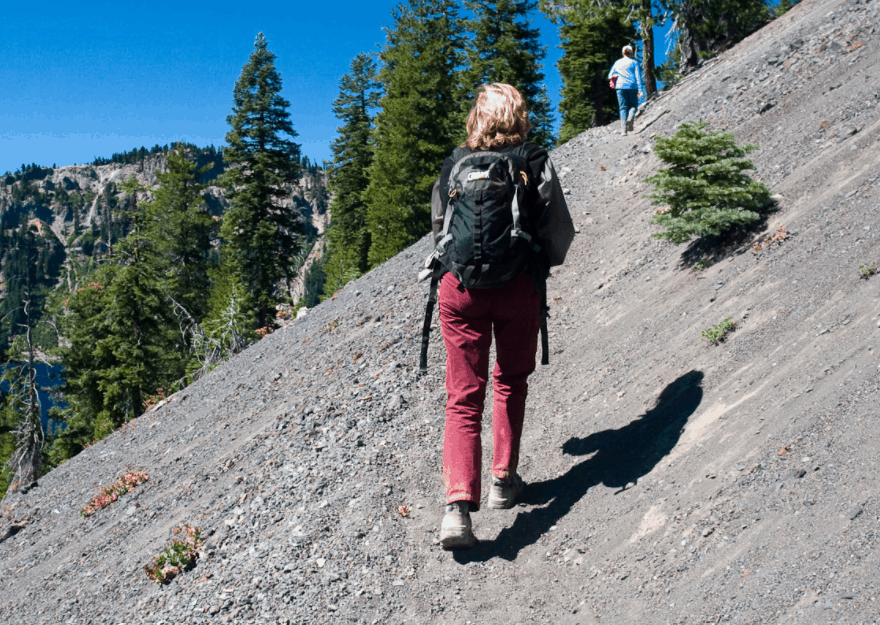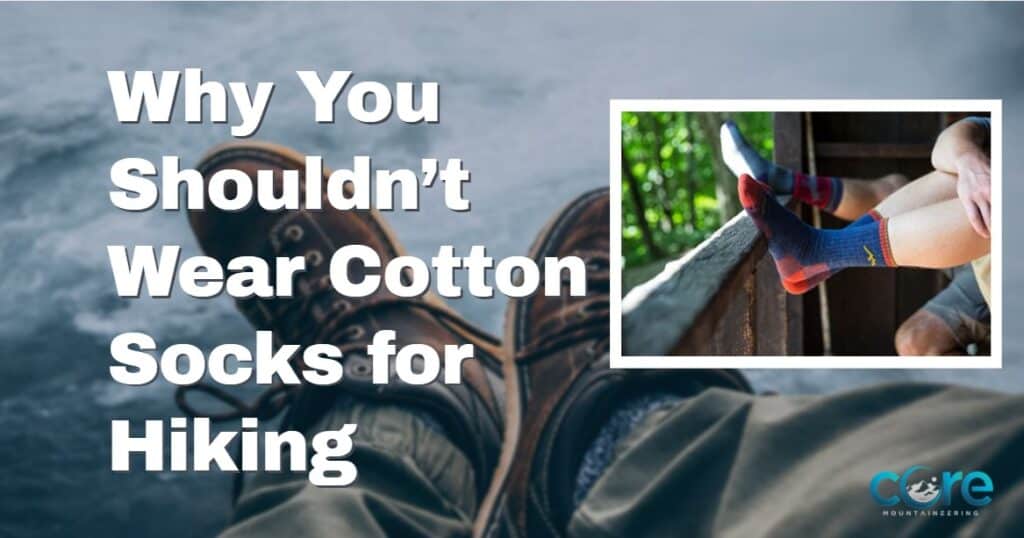Whether you enjoy a casual walk through the local trails or gear up for a long trek into the deep forest, hiking is a universally treasured pastime from folks all around the world.
It’s meditative, exciting, and an incredibly useful exercise. The roots of its abilities extend to so many aspects of life.
From rugged desert terrain to dense forest landscapes, through mountainous rocky trails, a simple hike’s variations are endless.
If you’re going to be enjoying the woods, you might as well be wearing something comfortable, and most outdoor experts will tell you plain and simple that jeans suck.
Besides being made from cotton, which is terrible for the outdoors, jeans are heavy and offer poor ventilation. Sure, they can be suitable for those quick hikes, but you might want to re-assess for anything more than a brisk walk.
Before we get into the article if you’re looking for our quick recommendations check out Columbia Men’s Silver Ridge Convertible Pants, as a cheap option. If you want a high-end pair of pants then look at Fjällräven Vidda Pro Ventilated Trousers, both available on Amazon.
Why Jeans Suck for Hiking
In my experience, jeans have always been too heavy for a pleasant hike. They weigh down my legs to the point I feel like I’m walking underwater. For some of you, this needs no explaining. You’ve been on a hike with jeans and have experienced their…uncomfortable side-effects.
But for those of you lucky enough to have sidestepped this unfortunate mishap, allow me to fill you in.
First off, they’re made from cotton. When woven tightly together, it forms denim. Cotton itself is one of the worst materials to have with you in the wilderness, but I’ll touch more on that later.
Secondly, jeans are terrible with moisture.
Have you ever worn jeans from the wash that haven’t entirely dried completely?
I can’t tell you the number of times I’ve grabbed a half-dried pair of wranglers from the wash as I ran 15 minutes late for work. So, I can tell you from experience how uncomfortable it is.
Jeans take forever to dry, and even when they do, they get stiff and starchy. Also, most jeans aren’t breathable. They do a poor job at regulating temperature, which in most cases leads to heavy sweating.
All that extra perspiration will eventually cause chaffing, which can be mind-numbingly frustrating depending on how far out on the trail you are. If you decide to hike in jeans, make sure you bring plenty of talcum powder along, you’ll need your fair share.
Another Reason Hiking in Jeans Suck
Additionally, they restrict so much movement. I don’t think I’ve ever seen anyone doing splits in a pair of Levi’s before.
Now, these all might sound like minor inconveniences, but these simple complications can possess severe consequences. The fact that denim absorbs moisture quickly but is not quick to dry can be a deadly attribute in specific environments. If the temperature drops, your jeans can freeze solid. It even leads to hypothermia and frostbite.
On the opposite end of the spectrum, wearing jeans increases your chances for a heat stroke. Jeans have terrible insulation and are the worst for letting your legs breathe.
Chaffing might seem like something that generally happens to some folks on a humid day. Well, you’re not wrong.
But chaffing on a long hike is a completely different game. The extensive movement can cause severe blistering and even break the skin, leading to dangerous infections if poorly treated. In extreme situations, it can even cause yeast infections.
With that being said, going for a walk wearing jeans isn’t going to kill you. Just be sure you gauge yourself accurately. In specific environments, they are actually pretty great. They’re tough and durable, which is perfect for thorns and sharp intrusive twigs.
But if you have the choice, ditch the jeans, and find something more suitable.
Why Is Cotton A Bad Choice for Hiking?
I don’t mind a nice cotton shirt. They’re soft and comfy, but they shrink like nobody’s business.
(I’m more of a synthetic guy)
But we aren’t talking fashion; we are talking efficiency. I know you want to look cool on the trail sporting your new Nordstrom jacket, but functionality is vital in the wilderness.
I wasn’t trying to pick on jeans before. The cotton they’re made from is the real culprit.
A relatively common mantra shared amongst hunters and hikers alike offers a clear and straightforward message, cotton kills.
Cotton (especially denim) is pretty much an expensive sponge. It effortlessly absorbs insane amounts of water. It can hold about 27x its weight in water (while a material such as polyester only holds 4x), (HowStuffWorks). Since it takes forever to dry completely, it easily causes hypothermia.
If have a great article about why you should avoid cotton hiking socks, Why You Shouldn’t Wear Cotton Socks for Hiking – What You Should Wear Instead
It’s not only rain and snow that can compromise your cotton but also your sweat.
Cotton is heavy and offers poor insulation. This makes it harder to ventilate and easier to sweat. The cotton then absorbs that sweat which rapidly cools. Experienced outdoorsmen understand that sweating can be life or death.
What Else Should Be Avoided?
Unless you’re backpacking for days at a time, you don’t need to overcomplicate your choices. Just make sure you’re warm (or cool) and waterproof.
For more tips, check out our article about what to avoid when backpacking, Things Not to Do While Hiking – Avoid These Costly Mistakes.
Avoid anything that impedes your mobility. I’m not saying you should be able to pull off the splits in your Carhartt overalls. But you should be able to catch yourself on a slip and hoist up steep inclines.
Stay clear of bulky clothing. You want to layer correctly, and bulky clothing makes this problematic.
It weighs you don’t and makes navigation through thick brush frustrating.
You might also want to leave those cool ankle socks at home. Hiking boots and shoes often have high-tops. Unless you’re wearing long socks, the collar can rub against the skin, causing abrasions and blisters. We’ve all felt this while breaking in new shoes.
Don’t ever choose fashion over functionality. In extreme situations, it can save your life.
EMS also has a list of clothes that should be avoided if you’d like to check their list out as well.
Which Material Should I Bring for The Hike?
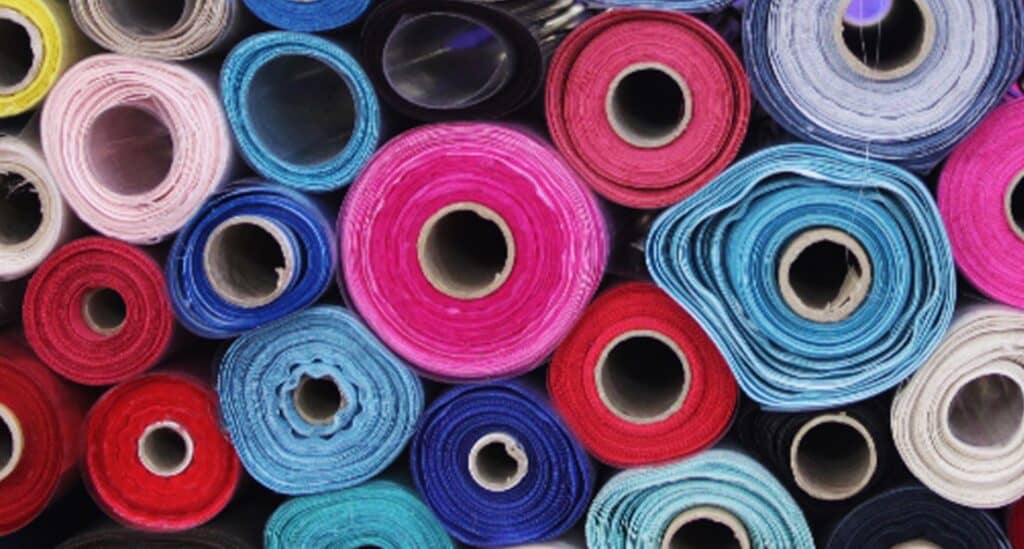
So now that we know to leave the jeans at home, we need some effective gear.
Keep in mind that it all depends on the type of backpacking you’re interested in. A meditative walk through a mountain trail or an adventurous sprawl through a thick landscape.
For more mild activities, you can generally just dress for the weather. For longer hikes, you might need to think more ahead.
For the outdoors, I prefer polyester and other synthetic materials. Polyester is synthetic yet more durable than most. They make fantastic pants and exceptional jackets. Synthetic materials are lightweight, that comfortably accommodates all motor functions. Not to mention very quick drying.
Be sure to wash your polyester items routinely. They easily retain odors and sometimes even develop bacterial growth. (That one is from the internet, not personal experience)
Nylon is the perfect material for the casual trail jogger.
It’s waterproof and extremely lightweight. It offers optimal flexibility supporting all ranges of motion. Unlike its polyester cousin, it’s known to resist mildew. If you’re looking for a great pair of hiking pants made out of nylon, check if prAna hiking pants are still available on Amazon here.
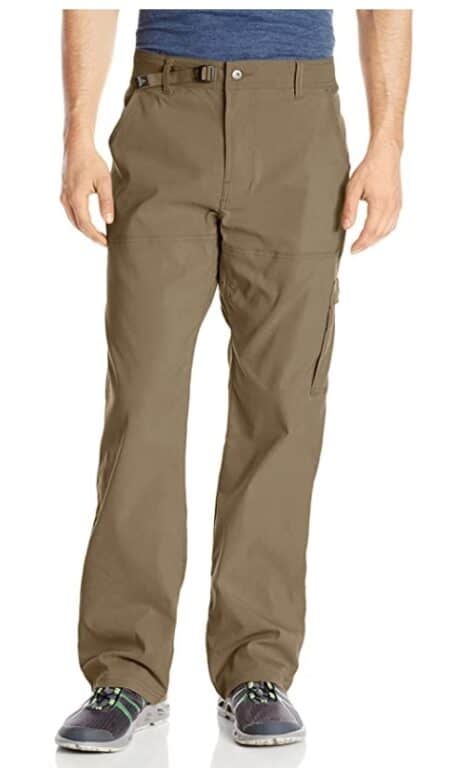
Wool has been steadily growing in popularity over recent years. Its rough and coarse feel has detoured people from taking advantage of its bells and whistles. But now, ultra-fine wool can be created, which is promised itch-free. It’s incredibly breathable and perfect for accompanying multiple layers. Ideal for those polar strolls.
Silk is a somewhat debated item in the outdoor industry. It’s effective but very sensitive. It must be chemically treated to help repel moisture effectively. It’s lightweight and very soft, adding very little bulk making it perfect for laying.
Personally, silk is a little risky for me. But many people have experienced superb results.
Silk takes much longer to dry than polyester and nylon fabrics. Best for mild-cool weather. Perfect for autumn. I have a pair of silk liners for my gloves that feels like I can be comfortable 10 degrees colder, without the liners. These are the ones I use, ALASKA BEAR, that I bought off of Amazon.
Although it’s usually a little pricy, fleece is a fantastic choice for winter hiking. Fleece is interesting because it’s not the actual fabric keeping you warm. Its incredibly insulative properties capture your body heat, trapping it within its layers, keeping you nice and toasty.
Despite the individual characteristics of different materials, there are many universal aspects to look for when shopping for outdoor wear.
You might have seen the word “moisture-wicking” on tags or labels. Wiking fabrics repel water and are often amazingly fast drying. Merino Wool seems to be universally agreed upon as the best moisture wicker.
Alright, so your jacket is waterproofed, but will it keep you warm? Insulation is the next most important thing. If you find that your jacket isn’t keeping you warm when you’re 15 miles out on the trail, you’re in trouble.
The bottom line, you want your clothing to be as adaptable as you are.
Recommendations
Let me start by saying I’m in no way an outdoor professional. But I’ve been involved with it since I was a child, and I’ve had lots of time to find what works for me.
You can also find a great review of KÜHL Hiking Pants here.
I’ve mentioned them above but I really like Fjällräven Vidda Pro Ventilated Trousers. They are made mostly of Polyester with some nylon and cotton blends. You can see if they are still available on Amazon here.

As I’ve said before, I love Polyester and other synthetic material for camping gear. Comfortable, reliable, and affordable. Synthetic materials unlike cotton are versatile in all types of climates.
If you hike in colder climates and have a couple of extra bucks to play with, I’d recommend wool. More specifically, Merino wool. Perfect for layering with other clothing and very good at resisting moisture. It’s lightweight and comfortable on the move.
You can also find a review of KÜHL Hiking Pants here.
I haven’t found any really good hiking pants made with Merino wool, at least nothing for men. There are a lot more options for women and finding leggings made out of Merino wool, you can see they have tons of options on Amazon here. For men, this is one of the only “normal” looking pair of Merino wool pants I’ve found also on Amazon here.

